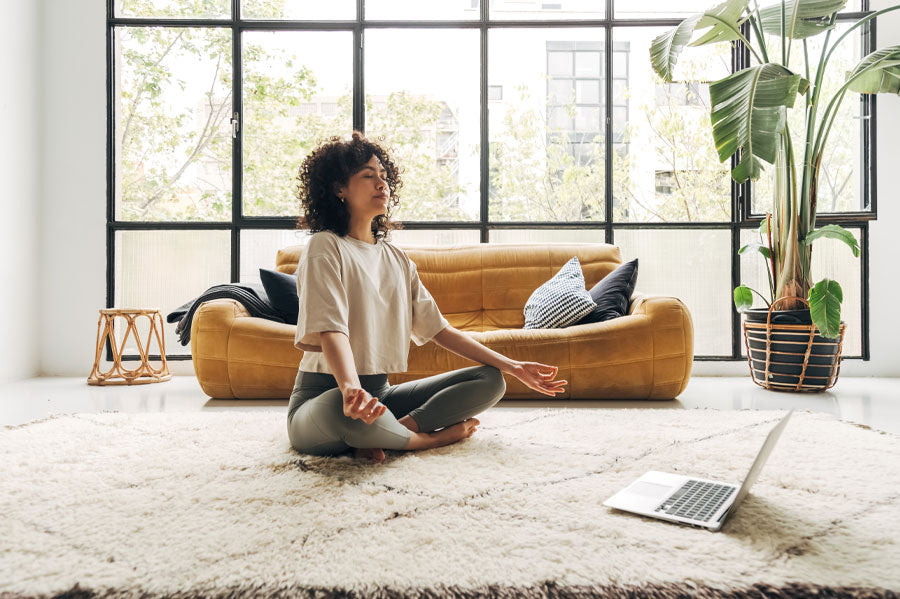FREE SHIPPING on most orders $25+ HAMMOCK BUYING GUIDE
Menu
-
-
Hammocks
-
Hammock Stands
-
Hammocks with Stands
-
Hanging Hammock Chairs
- View all Hammock Chairs
- Brazilian Style Hammock Chairs
- Colombian Hammock Chairs
- Mayan Hammock Chairs
- Mayan Hammock Chairs Deluxe
- Universal Hammock Chair Stand
- U Hammock Chair Stand
- Brazilian Hammock Chair with Universal Chair Stand
- Colombian Hammock Chair with Universal Chair Stand
- Mayan Hammock Chair with Universal Chair Stand
- Mayan Hammock Chair Deluxe with Universal Stand
-
Accessories
- Gift Cards
- Tools and Guides
- Bargain Bin
-
- 1-800-207-4761
- Login

FREE SHIPPING on most orders $25+ HAMMOCK BUYING GUIDE
TYPES OF MEDITATION AND WHICH BEST FOR YOU
October 16, 2019 5 min read

A Guide on the Various Types of Meditation and How to Meditate for Beginners
No matter what stage you're at in life, or your age, sex, or religion, we can all stand to feel a little more relaxed and a little more at ease.
Meditation in all its various forms is an excellent way to help gain perspective, calm the nerves, and relax your mind and body.
Whether you’re hanging in a hammock, out in nature, or in a meditation studio, there are various types of meditation that you can try. And by experimenting with a few types, you can find the right one for you to improve your physical and mental health and well-being.
READ MORE: HANG IN A HAMMOCK FOR BETTER MENTAL HEALTH
FEATURED PRODUCT: XL THICK CORD MAYAN HAMMOCK WITH BAMBOO STAND
WHAT IS MEDITATION?
Meditation is a practice that reduces stress and improves physical and emotional well-being. It provides increased relaxation and awareness in a hectic, fast-paced, and stressful world that tends to dull our senses and make us lose touch with what matters most in life.
READ MORE: THE HEALING POWER OF THE OUTDOORS
BEST 20 REASONS TO MEDITATE DAILY
- Reduce stress and elevate mood
- Reduce anxiety
- Improve sleep
- Ease symptoms of depression
- Lower blood pressure
- Improve heart health
- Relieve pain—including headaches
- Become a nicer person—being more social, empathetic, and having a team-oriented mentality
- Become a better problem-solver and maintain healthy relationships with a calm body and mind
- Increase memory
- Increase creativity
- Boost productivity
- Increase focus and cognitive abilities
- Reduce age-related brain deterioration
- Have a younger biological age
- Increase performance during workouts and minimize sensitivity to pain
- Experience fewer and shorter colds
- Avoid feeling burnout
- Reduce emotional and binge eating
- Reduce feelings of anger and dwelling on anger-inducing situations
READ MORE: NATURAL WAYS TO REDUCE ANXIETY
FEATURED PRODUCT: QUILTED HAMMOCK – DELUXE
TYPES OF MEDITATION
Here are several of the most common types of meditation practiced today, including how to meditate:
-
Loving-Kindness Meditation
Also known as Metta meditation, the goal of this meditation technique is to build an attitude of love and kindness toward everyone and everything, including those who cause you stress.
This meditation is designed to promote compassion and love for oneself and others. And it can help increase positive emotions for those with depression, anxiety, and post-traumatic stress disorder (PTSD).
While breathing deeply, open your mind to receiving loving kindness, and send messages of love and compassion out to the world and also to specific people.
Repeat this message of love and kindness as many times as necessary until you feel your attitude shift toward compassion for others and yourself.
-
Body Scan or Progressive Relaxation
This type of meditation focuses on scanning the body for areas of tension, noticing the tension, and releasing it. It is used to promote feelings of calmness and relaxation. It can also help people fall asleep, and it may help those with chronic pain.
There are two ways of doing this. You can tense and then relax your muscles. Or you can visualize a wave drifting over your body and releasing tension, starting at your feet.
-
Mindfulness Meditation
Mindfulness meditation focuses on being in the present, encouraging awareness of existing surroundings without any judgement, instead of dwelling on the past or dreading the future.
Mindfulness meditation has many benefits, including:
- Reduced fixation on negative emotions
- Reduced impulsive, emotional reactions
- Improved focus and memory
- Improved relationship satisfaction
- Lowered blood pressure
This type of meditation can be practiced almost anywhere by calmly noticing your surroundings, including the sights, smells, and sounds.
You can also practice breath awareness, being aware of your breathing. And as you relax, you will draw your attention to areas of tension in your body.
-
Breath Awareness Meditation
A form of mindful meditation, breath awareness focuses on mindful breathing. This meditation has the same benefits as mindfulness meditation, including improved concentration, emotional flexibility, and reduced anxiety.
With this meditation, breathe deeply and slowly, focusing on your breath and counting your breaths, ignoring other thoughts that enter your mind.
-
Kundalini Yoga
This form of meditation combines movements with mantras and deep breathing and is often practiced with an instructor in a class.
Like other types of yoga, kundalini yoga improves strength and energy, reduces pain, and improves mental health by reducing anxiety and depression.
-
Zen Meditation
Also called Zazen, this form of meditation is part of Buddhist practice, and is often studied under a teacher due to its specific steps and postures.
It is similar to mindful meditation, but it requires more discipline and practice.
The focus of Zen meditation is to find a comfortable position, focus on your breathing, and mindfully observe your thoughts without any judgement.
-
Transcendental Meditation
This is a spiritual form of meditation in which the practitioner aims to transcend above one’s current state of being while remaining seated and breathing slowly. It leads to heightened mindfulness and spiritual experiences.
During this meditation, practitioners focus on a mantra, a repeated word, or a series of words that are determined by the teacher. Alternatively, people may choose their own mantras.
HOW OFTEN SHOULD YOU MEDITATE?
How often you meditate is entirely up to you. Any amount of meditation is better than none. So if you’re wondering how to start meditating, try to meditate one to three times a week to start, working up to once a day.
If you plan to meditate at the same time every day, it will become a habit that will be easy to incorporate into your daily routine. You may also wish to meditate more than once a day, using it to reduce stress when needed.
READ MORE: THE EFFECTS OF STRESS ON YOUR BRAIN
HOW LONG DOES IT TAKE FOR MEDITATION TO WORK?
Meditation is not a results-focused practice. So you shouldn’t focus on the results. Instead, be reassured knowing that meditation can work very quickly.
During meditation, you will likely feel less stressed, more at peace, and more accepting. And these feelings will eventually trickle into your life outside of meditation over time and with practice.
READ MORE: HAMMOCK AS THERAPY FOR CHILDREN WITH AUTISM
FEATURED PRODUCT: NICARAGUAN HAMMOCK – DELUXE
THE TAKEAWAY
There are many types of meditation that you can try. So experiment with a few to find a style that suits you and your lifestyle.
Like with any skill, it takes time and practice to master a meditation method. But if you stick with it, it can become a part of your daily routine to improve your health, well-being, and overall quality of life.
Safety First!
When using a hammock*, safety is paramount. Please make sure to follow these important guidelines when purchasing, installing and using a hammock
*(includes Hammock, Hammock Chair, Hammock Stand and Hammock Accessories)
Safety First!
When using a hammock*, safety is paramount. Please make sure to follow these important guidelines when purchasing, installing and using a hammock
*(includes Hammock, Hammock Chair, Hammock Stand and Hammock Accessories)
Related Products
Want to relax?
Join for exclusive content and promotions we only give to our email list!



